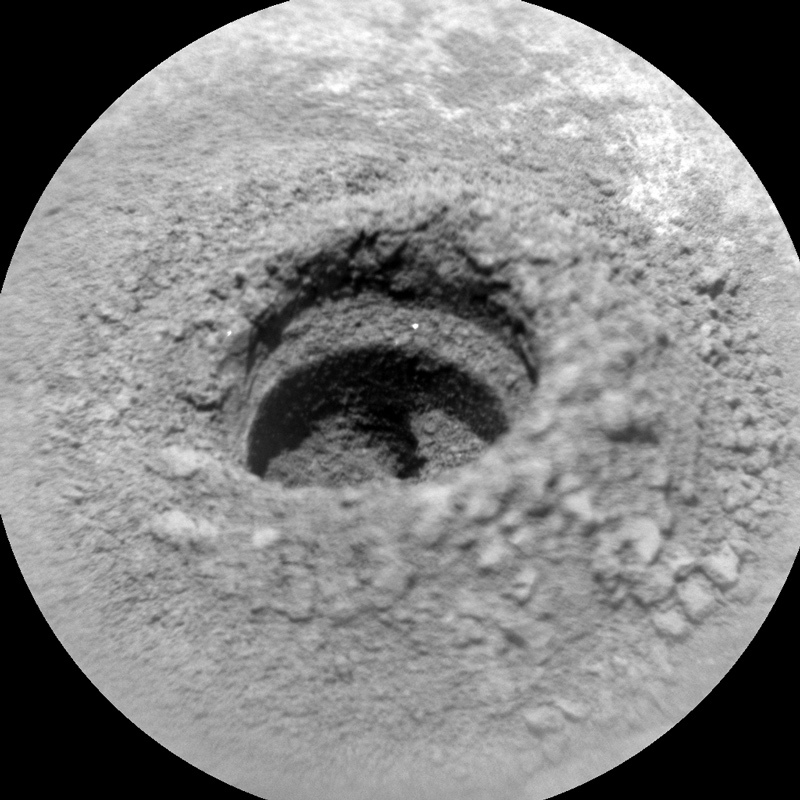2 min read

Curiosity is still at the Edinburgh drill site as part of a mini campaign to sample the Greenheugh pediment. We’re finishing drill-related analyses and activities, and the three-sol weekend plan is focused on dumping sample from the drill bit assembly and documenting the dump pile and drill tailings.
I was the Science Operations Working Group (SOWG) Chair today and it was a busy but fun day of remote operations. The plan kicks off with a ChemCam observation of the Edinburgh drill hole (as seen in the above ChemCam RMI image) to get some extra data points to characterize the drill site, as well as the “Calders Sandstone” bedrock target, and Mastcam documentation. Then Curiosity will dump the sample and document the pile with Mastcam and MAHLI, followed by APXS. At the end of the first sol the rover will pause and take in the view at twilight – including a Navcam image of the horizon in which Earth and Venus should be visible! Then it’s back to work with an overnight APXS integration on the dump pile. On the second sol Curiosity will take a ChemCam long distance RMI mosaic of the pediment capping unit to assess the stratigraphy and sedimentary structures exposed on the flank of Gediz Vallis. Additional ChemCam RMI mosaics will be acquired on the third sol, followed by a Mastcam multispectral observation of the dump pile, and Mastcam documentation of some interesting dark layers in the mound stratigraphy. Throughout the plan there are also a number of the Mastcam and Navcam observations to complete a photometry experiment. The rover will also continue to monitor atmospheric activity with a Navcam line of sight observation, dust devil survey, and Mastcam tau observation, and a whole suite of activities early on the morning of Sol 2727. While everyone is staying safe at home, it’s especially nice to hear so many voices from our team members and to look forward to exciting new data from Mars!
Written by Lauren Edgar, Planetary Geologist at USGS Astrogeology Science Center







